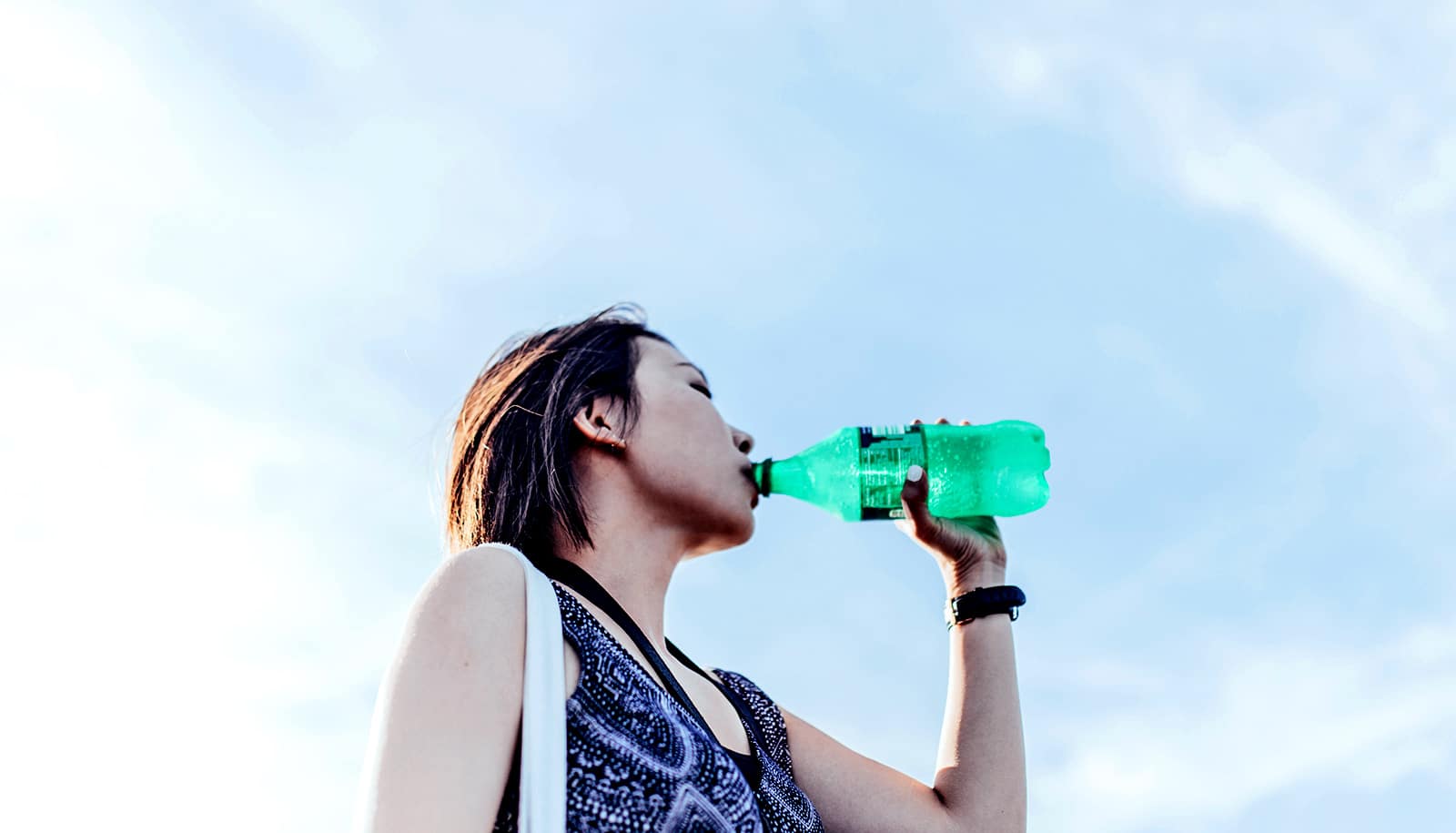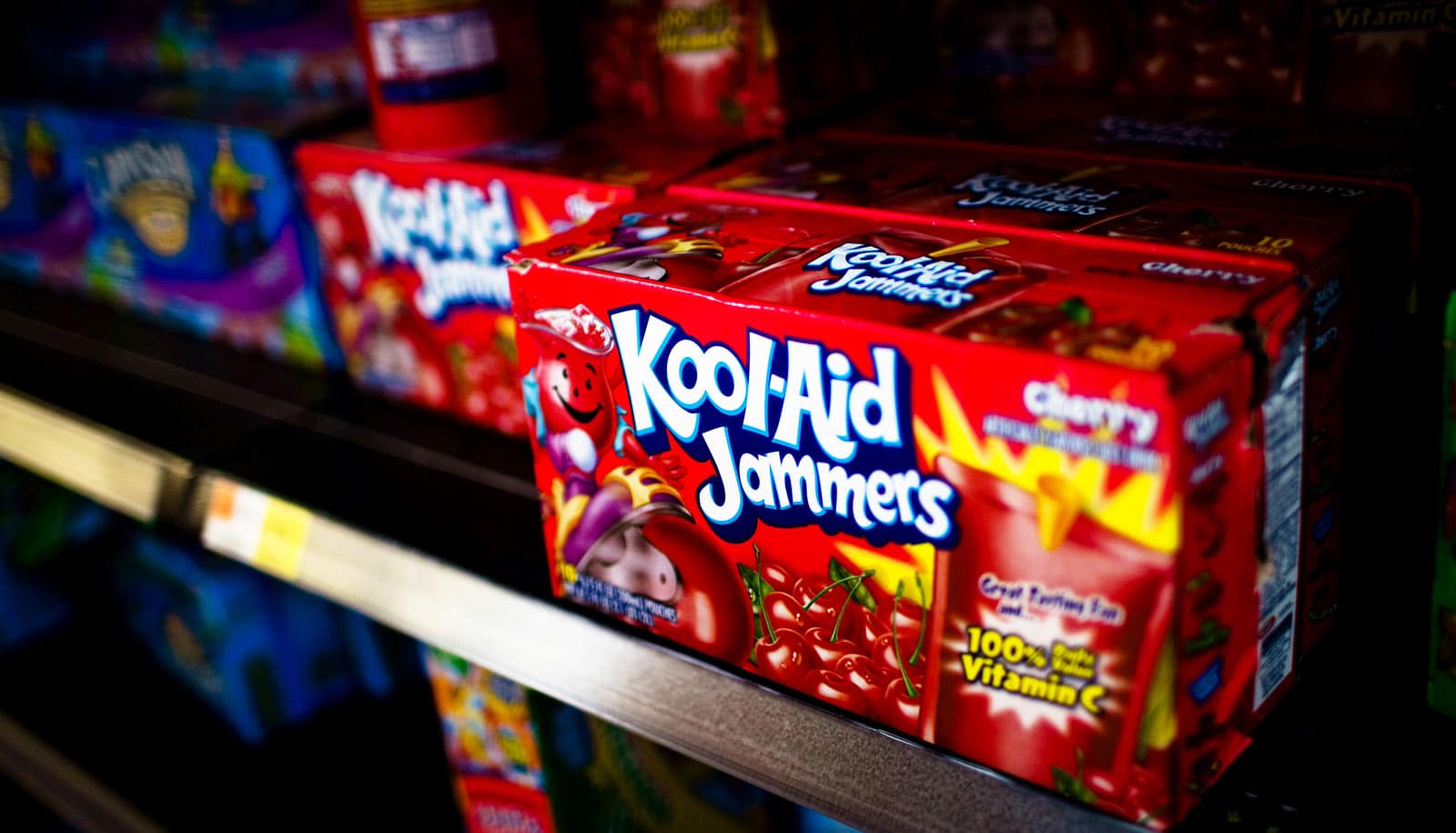Warning labels can keep consumers from choosing sugary drinks like soda, with graphics having the greatest impact, according a new study.
However, the United States has yet to pass legislation that would require such warning labels.
“The influence of sugar-sweetened beverage (SSB) warning labels tends to be in line with the efficacy of warning labels on tobacco packages,” says Ruopeng An, assistant professor at Washington University in St. Louis and lead author of the paper in the American Journal of Preventative Medicine. “In addition, SSB warning labels may alter consumers’ perceptions about the healthfulness of a beverage.”
SSBs are beverages that are sweetened with various forms of added sugars, such as regular soda, fruit drinks, sports drinks, energy drinks, sweetened waters, and coffee and tea beverages with added sugars. From 2011 to 2014, on any given day, 6 in 10 youths and 5 in 10 adults in the US drank SSBs and obtained over 140 calories from their consumption.
Different types of warnings
“During the past decade, various types of warning labels have been developed and tested that aimed to inform consumers about the health impact or nutritional implication of SSB consumption,” An says.
“Some SSB warning labels conveyed messages in text form, some adopted symbols or graphics, and others used a combination of different means to communicate with consumers. To our knowledge, no review has been conducted to summarize the scientific evidence generated from those studies,” he says.
In an effort to inform policymaking and promote evidence-based interventions at the population level, the new study serves as the first systematic review that aims to comprehensively identify and synthesize scientific literature that assessed the impact of SSB labels on consumer behaviors and intentions in the US and worldwide.
A total of 23 studies met the predetermined eligibility criteria and were included in the review. Meta-analyses revealed that the use of SSB warning labels was associated with reduced odds of choosing SSBs among participants.
“Across the alternative forms of SSB warning labels, a picture or graphic warning label was associated with the most substantial decrease in the odds of choosing SSBs (66%),” An says.
“Graphic warning labels may be more likely to be noticed by a consumer, which highlights the importance of salience in engaging consumers’ attention. Also, graphic warning labels might trigger a spontaneous negative response against the product that dissuades consumers.”
Political barriers to warning labels
Chile passed a law in 2016 that required front-of-package labels for foods and drinks with added sugars, sodium, saturated fats, or calories that exceeded preset limits. Some early evidence suggests that the soda purchases in Chile considerably declined following the implementation of the law. In 2019, Mexico’s Health Commission approved a proposal that introduced front-of-package food warning labels to combat obesity.
Despite the promising effect of SSB warning labels and recent legislation in other countries, An warns about the substantial political barriers in the US to sign it into law, pinpointing a few failed legislative efforts.
“The Sugar-Sweetened Beverages Safety Warning Act (SB 1000) was introduced in California in early 2014,” he says. “The act prohibited the distribution and sale of certain SSBs in California that did not carry a safety warning message about the health consequences of SSB consumption. The bill was later amended to SB 203 but is no longer active.
“In the following years, similar bills were introduced in New York, Vermont, Hawaii, and Washington. In 2015, San Francisco passed the nation’s first law that required the beverage industry to post health warnings on advertisements for SSBs. However, the bill was later blocked by the 9th US Circuit Court. In early 2019, the Sugar-Sweetened Beverages Safety Warning Act (SB 347) was reintroduced in California and amended a few months later. To date, no law mandating SSB warning labels has been implemented in the US,” An says.
“SSB warning labels tend to be a low-cost, scalable, and effective policy leverage to reduce calorie intake and prevent unhealthy weight gain in the population, but relevant legislation in the US could be a long-lasting battle.”
Additional coauthors are from Tsinghua University in China, Cornell University, and Washington University in St. Louis.


